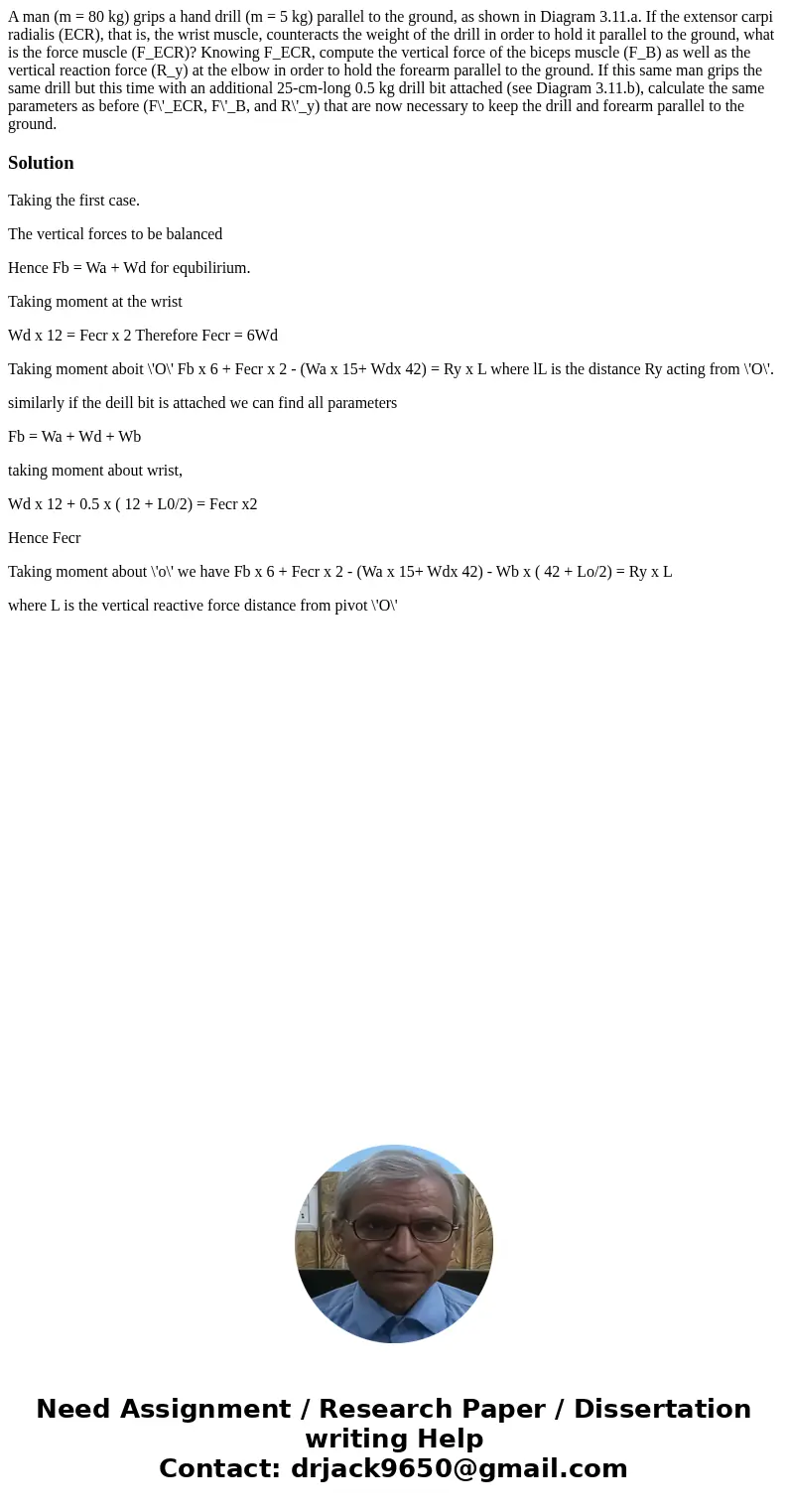A man m 80 kg grips a hand drill m 5 kg parallel to the gr
A man (m = 80 kg) grips a hand drill (m = 5 kg) parallel to the ground, as shown in Diagram 3.11.a. If the extensor carpi radialis (ECR), that is, the wrist muscle, counteracts the weight of the drill in order to hold it parallel to the ground, what is the force muscle (F_ECR)? Knowing F_ECR, compute the vertical force of the biceps muscle (F_B) as well as the vertical reaction force (R_y) at the elbow in order to hold the forearm parallel to the ground. If this same man grips the same drill but this time with an additional 25-cm-long 0.5 kg drill bit attached (see Diagram 3.11.b), calculate the same parameters as before (F\'_ECR, F\'_B, and R\'_y) that are now necessary to keep the drill and forearm parallel to the ground. 
Solution
Taking the first case.
The vertical forces to be balanced
Hence Fb = Wa + Wd for equbilirium.
Taking moment at the wrist
Wd x 12 = Fecr x 2 Therefore Fecr = 6Wd
Taking moment aboit \'O\' Fb x 6 + Fecr x 2 - (Wa x 15+ Wdx 42) = Ry x L where lL is the distance Ry acting from \'O\'.
similarly if the deill bit is attached we can find all parameters
Fb = Wa + Wd + Wb
taking moment about wrist,
Wd x 12 + 0.5 x ( 12 + L0/2) = Fecr x2
Hence Fecr
Taking moment about \'o\' we have Fb x 6 + Fecr x 2 - (Wa x 15+ Wdx 42) - Wb x ( 42 + Lo/2) = Ry x L
where L is the vertical reactive force distance from pivot \'O\'

 Homework Sourse
Homework Sourse